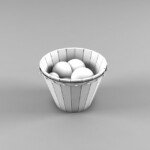CNC machining (computer numerical control machining) has revolutionized manufacturing by providing precision, efficiency and versatility in the production of complex parts. However, understanding the costs associated with CNC machining can be complex and often confusing to both newbies and seasoned professionals. In this comprehensive guide, we’ll dive into the many aspects that impact CNC machining costs, ensuring you’re fully informed and able to make strategic decisions that will benefit your project.
Table of contents
- Introduction to CNC machining
- Factors affecting CNC machining costs
- Material selection
- CNC machine tool types
- design complexity
- Tolerances and Specifications
- Setup time and run time
- Labor cost
- Part quantity
- Material Costs in CNC Machining
- Commonly used materials for CNC processing
- Cost comparison of different materials
- Types of CNC Machine Tools and Their Costs
- CNC milling machine
- CNC lathe
- CNC milling machine
- 3D printers and additive manufacturing
- Understand complexity and its cost implications
- Design for Manufacturability (DFM)
- How complexity impacts time and cost
- Tolerances and Specifications in CNC Machining
- The cost impact of tight tolerances
- Balancing quality and affordability
- Operating Costs: Setup Time vs. Run Time
- Calculate setup time
- Analyzing runtime: what affects it?
- Labor costs for CNC machining
- Skilled labor and unskilled labor
- Geographic cost differences
- Economies of scale: volume and cost reductions
- Learn about production runs
- The role of batch size in cost efficiency
- Practical applications and case studies
- Best practices for reducing CNC machining costs
- in conclusion
- Frequently Asked Questions (FAQ)
Introduction to CNC machining
CNC machining is a manufacturing process that uses computer control to operate machine tools. It has gained widespread popularity due to its ability to produce high-precision parts from a variety of materials, including metals, plastics and composites. The technology facilitates different machining processes such as milling, turning and drilling, allowing manufacturers to produce complex shapes and designs with intricate details.
However, while CNC machining can be beneficial, understanding the costs associated with it is crucial for effective budgeting and planning. This guide aims to demystify CNC machining costs, breaking down the factors that drive expenses while providing actionable insights for cost-effective manufacturing.
Factors affecting CNC machining costs
Understanding the various factors that affect CNC machining costs is critical to budget management and project planning. Below, we explore these factors in detail.
Material selection
Material selection is one of the most important factors affecting CNC machining costs. Different materials have different properties, mechanics, and cost categories. For example, metals like titanium and copper are generally more expensive to process than plastics like acrylic or polycarbonate.
When selecting materials, consider not only price but also the desired performance of the finished component. In CNC machining, the following material categories are the most common:
- Metal: Aluminum, stainless steel, titanium, brass and iron.
- plastic: ABS, nylon, polycarbonate and PEEK.
- composite materials: Carbon fiber and fiberglass.
CNC machine tool types
The type of CNC machine used can significantly affect production costs. Each machine has its operating capabilities, cost, speed and maintenance requirements:
-
CNC milling machine: Typically used to create more complex parts and features. Although milled parts may cost more initially, they often have better finishes and tolerances.
-
CNC lathe: Best for cylindrical parts. They tend to be more cost-effective for high-volume production.
-
CNC milling machine: Typically used for machining soft materials such as wood and plastic, and are less expensive than milling machines.
- 3D printer: Part of the additive manufacturing field that offers unique cost-efficiencies for complex geometries that would otherwise be costly to produce via traditional methods.
design complexity
The complexity of a part’s design is directly related to its processing time and cost. Complex geometries may require multiple machining operations, increasing setup time and labor costs. When designing, strive for simplicity without sacrificing functionality. This approach is often called design for manufacturability (DFM).
Tolerances and Specifications
Tight tolerances are critical for applications requiring high precision. However, these can significantly increase costs due to the additional time and resources required to achieve high accuracy. The balance between quality and affordability is crucial when determining required specifications.
Setup time and run time
The total cost of CNC machining includes setup time and runtime.
-
Set time: This includes the time required to prepare the machine, install the workpiece, and adjust the tooling. More complex parts require longer setup times, impacting overall costs.
- running time: This is the time it takes to machine the part itself. Factors that affect run time include material hardness, machine speed, tool life and operating parameters.
Labor cost
Labor is another important factor affecting CNC machining costs. The industry often requires skilled operators and technicians, whose wages can vary widely based on experience, training and location. When estimating costs, it is important to consider local labor prices and the availability of technicians.
Part quantity
Economies of scale play an important role in CNC machining costs. Producing large quantities of parts typically reduces unit costs because the fixed costs of setup and programming are spread over more parts. Conversely, prototyping or low-volume production can be relatively more expensive due to higher initial setup costs.
Material Costs in CNC Machining
As mentioned previously, material selection significantly affects CNC machining costs. This section will compare the costs of common materials used in CNC machining.
Commonly used materials for CNC processing
Metal:
-
aluminum: Known for its lightweight and corrosion resistance. It is economical, especially for large quantities.
-
Stainless steel: Offers strength and durability, but is generally more expensive than aluminum.
- titanium: Highly prized for its strength-to-weight ratio, but may be cost-prohibitive for some applications.
plastic:
-
acrylic fiber: Affordable and lightweight, ideal for transparent parts and displays.
- nylon: High strength, a good balance between cost and durability.
composite materials:
- carbon fiber: Light and strong, but significantly more expensive than metal and plastic, making it suitable for special applications.
Cost comparison of different materials
While costs may fluctuate based on market conditions, here is a general comparison of the material costs involved in CNC machining:
| Material type | cost per kilogram | feature |
|---|---|---|
| aluminum | $3-$5 | Light weight, corrosion resistant and easy to process |
| Stainless steel | $2-$6 | Strong, durable and corrosion-resistant |
| titanium | $20-$30 | Extremely strong, lightweight and corrosion-resistant |
| ABS | $2-$5 | Light weight, impact resistance, easy to form |
| nylon | $4-$8 | Robust, flexible and cost-effective for medium volumes |
| carbon fiber | $20-$50 | High strength to weight ratio, expensive |
Note: Prices are approximate and depend on individual suppliers and market conditions.
Types of CNC Machine Tools and Their Costs
The machine itself can be a significant factor in the overall cost. Below, we describe the various types of CNC machine tools and their costs.
CNC milling machine
CNC milling machines range in price from $10,000 for basic models to $500,000 or more for high-end multi-axis machines. These machines work with a variety of materials and complex designs, making them versatile, but can cost more.
CNC lathe
CNC lathes are essential for producing cylindrical parts. Basic models start at about $5,000, while advanced lathes with enhanced features can cost more than $100,000. They are generally more cost-effective for production runs, helping to spread the cost of the machine over many units.
CNC milling machine
CNC milling machines are generally available at lower prices, usually between $3,000 and $20,000. They excel at processing softer materials like wood and plastic, but may need to be adjusted for harder materials.
Additive manufacturing (3D printing)
The cost of 3D printers tends to vary greatly depending on the technology and materials. Entry-level 3D printers cost as little as $2,000, while industrial-grade models with more advanced features can cost over $100,000. For parts with complex designs, combining traditional CNC processes with 3D printing can produce cost-effective results in the long run.
Understand complexity and its cost implications
Design complexity can either enhance functionality or hinder manufacturability. Let’s explore how complexity impacts cost.
Design for Manufacturability (DFM)
DFM is a proactive approach focused on streamlining manufacturing processes, reducing costs and ensuring quality. When designing components, consider:
- Simplify shapes to reduce processing time.
- Minimizes the need for additional processes such as assembly.
- Avoid undercuts that complicate processing.
By integrating DFM principles, users can significantly reduce costs while ensuring that their parts meet required specifications.
How complexity impacts time and cost
The more complex the part, the more time and resources it typically requires. This complexity can manifest in a number of ways:
- geometric complexity: Complex features require longer processing time.
- Mold complexity: More complex designs may require specialized tooling, increasing setup time and cost.
- Assembly requirements: Parts that require assembly of multiple components may result in higher production costs.
Tolerances and Specifications in CNC Machining
The accuracy of a CNC machined part is critical to ensuring its performance in a given application. However, tighter tolerances often increase costs.
The cost impact of tight tolerances
High precision requires specialized tools and additional time, which results in increased costs in terms of:
- Tool wear: Higher tolerances may shorten tool life, requiring frequent replacement.
- examine: Need for more stringent quality control processes.
As a rule of thumb, a tolerance of ±0.5 mm is generally more affordable than a standard of ±0.005 mm. Understand when tight tolerances are necessary and when they may be excessive.
Balancing quality and affordability
Striking a balance between quality and cost is crucial. When developing specifications, consider the following:
- Evaluate the functional requirements of the part.
- Analyze whether lower-cost options may meet your needs.
Tolerance decisions should be based not only on technical requirements but also on manufacturing budget.
Operating Costs: Setup Time vs. Run Time
Operational inefficiencies can cause costs to skyrocket. Understanding the impact of setup time and run time on overall operating costs can drive strategic adjustments.
Calculate setup time
Setup time can range from a few minutes to a few hours, depending on the complexity of the machine, design and tooling required. To minimize setup time:
- Optimize tool selection.
- Use modular fixtures that can accommodate a variety of workpieces.
Thoroughly train operators to effectively understand machine settings.
Analyzing runtime: what affects it?
Run time is the actual cutting time it takes to form the part. Factors that affect run time include:
- Material hardness: Harder materials generally take longer to process.
- Machine efficiency: Utilize high-speed machinery to reduce processing time.
- Tool life: Dull tools will significantly extend cutting time due to lower operating efficiency.
By analyzing these factors, manufacturers can identify areas where efficiency can be improved and costs reduced.
Labor costs for CNC machining
Labor costs are an important part of CNC machining expenses. The qualifications, skills and even location of the workforce can affect costs.
Skilled labor and unskilled labor
Skilled labor typically costs more up front but often results in higher quality products and fewer operating errors. Investing in training and retaining skilled workers can pay off in the long run through more efficient processes and less waste.
Geographic cost differences
Labor costs vary around the world, which can affect where you source your machining services. While hiring skilled labor in high-wage cities may increase costs, outsourcing to areas with lower wage structures may require careful consideration of quality and reliability.
Economies of scale: volume and cost reductions
Higher production volumes typically result in lower cost per unit due to economies of scale. As production increases, fixed costs are allocated to more units, thereby reducing overall costs.
Learn about production runs
When planning a CNC machining project, evaluate whether a production run would be beneficial based on expected volumes. If feasible, consider consolidating orders to maximize production efficiency.
The role of batch size in cost efficiency
Smaller batch sizes typically require higher unit costs due to higher setup percentages. Mass production can significantly reduce total costs and increase affordability of large orders.
Practical applications and case studies
To tie in the myriad elements we’ve discussed, let’s explore some of the practical applications of CNC machining.
-
Aerospace parts: CNC machining is crucial for manufacturing aircraft parts, which have extremely high precision and tolerance standards. In one case, a company specializing in the production of aerospace parts reduced costs by up to 25% after optimizing material selection and processing operations.
-
Automotive industry: CNC machining is often used in the automotive field. Integrated system cost analysis has enabled multiple automakers to reduce part production costs by 20% without compromising quality.
- consumer electronics: In the fast-paced world of consumer electronics, companies want to simplify costs while maintaining quality. After adopting DFM, some companies have noticed a reduction of more than 30% in manufacturing costs for critical components.
Best practices for reducing CNC machining costs
Controlling CNC machining costs requires a strategic approach. Here are some best practices for reducing spend without sacrificing quality:
-
Optimize design: Emphasis on DFM principles to make components easier and less expensive to manufacture.
-
Choose the right material: Determine materials that meet functional needs while meeting budget constraints.
-
Choose the right machinery: Match design complexity with appropriate CNC machinery to increase efficiency.
-
Simplify the process: Regularly review and enhance operational practices, especially during setup and operation.
- Evaluate supplier relationships: Work closely with suppliers to find alternative solutions or materials that can help save costs.
in conclusion
Understanding CNC machining costs is critical to efficient project management and manufacturing strategies. By considering various factors such as material selection, machine type, complexity, tolerances, labor and economies of scale, manufacturers can make informed decisions that help reduce overall expenses. Implementing best practices and conducting ongoing reviews of processes can further improve cost-effectiveness without compromising quality.
The transformative power of CNC machining can provide unparalleled advantages in precision engineering, but it requires a systematic approach to keep costs under control. By comprehensively analyzing every element that affects CNC machining costs, manufacturers can optimize their operations and increase profits.
Frequently Asked Questions (FAQ)
What is CNC machining?
CNC machining is a manufacturing process that uses computer-controlled machines to remove material from a workpiece to form the desired shape or size. It includes various processes such as milling, turning and drilling.
How to calculate CNC machining cost?
CNC machining costs can be calculated by considering material costs, setup and run time, labor costs, machine type and design complexity. You can also get quotes from processing service providers to get a more specific estimate.
Will CNC machining of complex designs cost more?
Yes, costs typically increase with design complexity because more time and machining resources are required to efficiently produce complex parts.
Can I reduce CNC machining costs?
Absolutely! You can reduce costs by simplifying designs, optimizing material selection, reducing setup time, selecting efficient machinery and reviewing supplier relationships.
Which materials are most cost-effective for CNC machining?
Aluminum and certain plastics, such as ABS, are often considered cost-effective materials for CNC machining because they offer a good balance between cost, processability, and performance.
By understanding these parameters, you will be better able to make insightful decisions about your CNC machining projects, ensuring you can deliver high-quality results without overspending.
Daguang focuses on providing solutions such as precision CNC machining services (3-axis, 4-axis, 5-axis machining), CNC milling, 3D printing and rapid prototyping services.


















